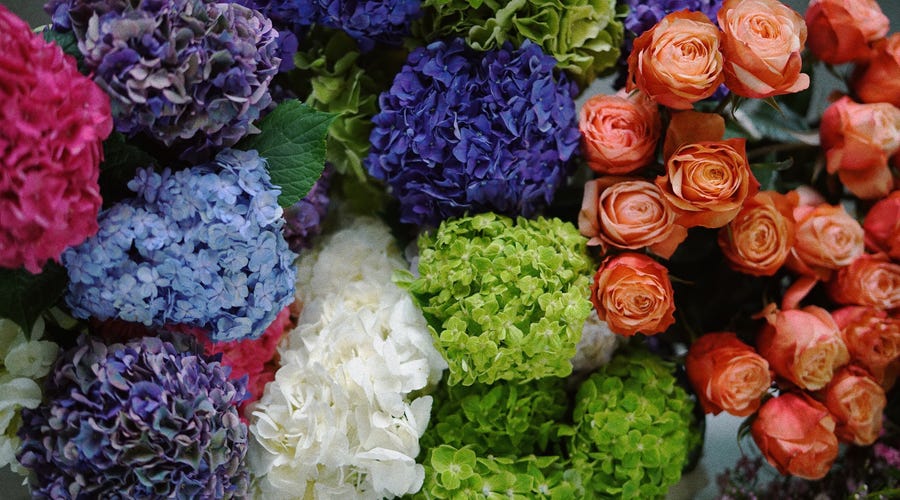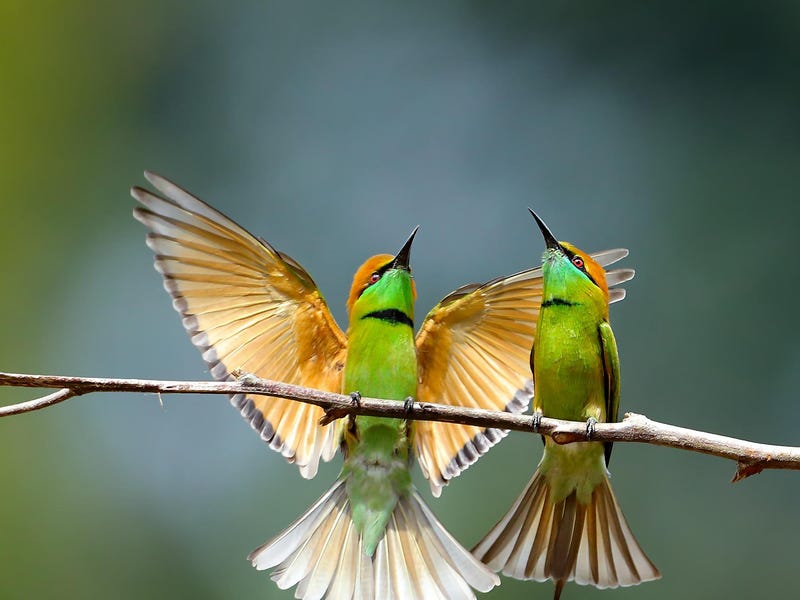
140 of the most beautiful flowers in Italian and flowers of Italy
Author: Jessica Maggi
Think of Italy, and what's the first thing that comes to your mind? Chances are, it is blue skies, friendly locals, tangerine-colored vintage Vespa scooters, and patches of colorful flowers hanging from the balconies.
Italians love flowers. You can tell by the variety of floral displays often seen whenever wandering around cities and towns throughout the Bel Paese. Have you ever seen a lovely flower, and wondered what it was called in Italian?
From all-time classics, such as roses, lilies, and sunflowers, to more exotic and funny-named ones, such as forget-me-nots and naked man orchids, learning the Italian words for some of the most common flowers is an important part of learning Italian vocabulary.
In this article, we’ve put together 140 flowers that you could be growing in your garden, organized into different categories, such as Italy national flowers, typical flowers of different Italian regions, and funny flower names, along with handy floral words and verbs.
Ready to make your Italian vocabulary flourish?
Download our FREE guide to flowering plants and their Italian names. Get planting!
Flowers in Italian
Learning vocabulary, including flower names in Italian, is like growing a garden. With practice, persistence, passion and patience, you’ll soon have an abundance of vocabulary that you can use to communicate gracefully and with confidence in your newly learned language. Let’s get to it, then. To start, let’s learn how to actually say flower in Italian. Ready? In Italian, “flower” is “fiore”. “Flowers” is “fiori”.
| English | Italian (singular) | IPA | Pronunciation |
| Flower | Fiore | [fjˈore] | phee-ohreh |
| Flowers | Fiori | [fjˈorɪ] | phee-ohree |
National flowers of Italy

The white lily is a national symbol of Italy, usually associated with the Virgin Mary and the Holy Family in religious contexts. And there’s another one. With its green, glossy leaves, white flowers. and reddish-orange berries, the so called corbezzolo recalls the Italian flag. Known in English as the strawberry tree for its red, strawberry-sized fruits, it grows wild throughout the Mediterranean basin, and began to be considered Italy's national flower in the 19th century, during the Risorgimento.
Famed Italian poet Giovanni Pascoli even dedicated an ode to this lovely plant in 1906, Al corbezzolo. Check it out!
| English | Italian (singular) | IPA | Pronunciation |
| White lily | Giglio bianco | [d͡ʒˈiʎo bjˈanko] | gee-wlhee-oh bee-ahn-koh |
| Strawberry tree | Corbezzolo | [korbˈet͡sːolo] | kohr-beh-tsoh-loh |
Flowers of Italy symbolic of the Italian regions
Like the sun they’re named for, spirit-lifting, cheerful sunflowers represent happiness, warmth, and loyalty. Did you know that sunflowers in Italian are also the emblem of Tuscany? In the table below, we’ve listed all the types of flowers of Italy, usually associated with Italian regions, and how to pronounce them.

| Italian Region | English | Italian (Singular) | IPA | Pronunciation |
| Abruzzo | Alyssum rupestre | Alisso rupestre | [alˈis͡so rʊpˈɛstre] | ah-lee-soh rooh-peh-streh |
| Basilicata | Anemone | Anemone | [anˈɛmone] | ah-neh-moh-neh |
| Calabria | Snowbell | Soldanella calabrese | [soldanˈɛlla kalabrˈeze] | sohl-dah-neh-lah kah-lah-breh-seh |
| Campania | Primula Palinuri | Primula di Palinuro | [prˈimʊla dˈi palinˈuro] | pree-moo-lah dee pah-lee-noo-roh |
| Emilia-Romagna | Cowslip | Primula appenninica | [prˈimʊla apːennˈinika] | pree-moo-lah ahp-eh-nee-nee-kah |
| Friuli Venezia Giulia | Armeria helodes | Spillone palustre | [spillˈone palˈustre] | spee-loh-neh pah-loo-streh |
| Lazio | Storax flower | Storace | [storˈat͡ʃe] | stoh-rah-cheh |
| Liguria | Bellflower | Campanula | [kampˈanʊla] | kahm-pah-noo-lah |
| Lombardy | Silene elisabethae | Silene di Elisabetta | [silˈɛne dˈi elizabˈetːa] | see-leh-neh dee eh-lee-sah-beh-tah |
| Marche | Peach flower | Fior di pesco | [fjˈɔr dˈi pˈɛsko] | phee-ohr dee pehs-koh |
| Molise | Great mullein | Tasso barbasso | [tˈas͡so barbˈas͡so] | tah-soh bahr-bah-soh |
| Piedmont | Saxifraga florulenta | Sassifraga dell’Argentera | [sas͡sifrˈaɡa dˈɛl’ard͡ʒentˈɛra] | sah-see-frah-gah dehl ahr-gehn-teh-rah |
| Apulia | Arum Lilies | Gigaro | [d͡ʒiɡˈaro] | gee-gah-roh |
| Sardinia | Peony Italian | Peonia | [peˈɔnia] | peh-oh-neeah |
| Sicily | Plumeria | Plumeria | [plʊmerˈia] | ploo-meh-ree-ah |
| Tuscany | Sunflower | Girasole | [d͡ʒirasˈole] | gee-rah-soh-leh |
| Trentino-South Tyrol | Androsace hausmannii | Androsace di Hausmann | [androzˈat͡ʃe dˈi hˈaʊzmann] | ahn-droh-sah-cheh dee ahus-mahn |
| Umbria | Jonopsidium savianum | Bivonea di Savi | [bivˈonea dˈi sˈavɪ] | bee-voh-neh-ah dee sah-vee |
| Aosta Valley | Astragalus alopecurus Pall | Astragalo maggiore | [astrˈaɡalo mad͡ʒːˈore] | ah-strah-gah-loh mah-jee-oh-reh |
| Veneto | Saxifraga berica | Sassifraga dei Colli Berici | [sas͡sifrˈaɡa dˈe͡ɪ kˈɔllɪ bˈɛrit͡ʃɪ] | sah-see-frah-gah deh-ee koh-lee beh-ree-chee |
Download our FREE guide to flowering plants and their Italian names
Remember all the names of your favorite flowering plants in Italian with our printable poster. We've included planting tips on light, position, watering, and soil type.
Other flowers of Italy
Are you curious to know how to say Marigolds in Italian? Let’s find out! The seeds we’re going to plant now are related to names of Italian wildflowers and ornamental plants.

I personally think that the five most difficult Italian flowers to pronounce are:
- glicine;
- violacciocca;
- giacinto;
- rododendro; and
- ciclamino.
So take extra time to practice those.
| English | Italian (singular) | IPA | Pronunciation |
| Orchid | Orchidea | [orkidˈɛa] | oh-rkee-deh-ah |
| Rose | Rosa | [rˈɔza] | roh-zah |
| Violet | Viola | [vjˈɔla] | vee-oh-lah |
| Gillyflower | Violacciocca | [vjolat͡ʃːˈɔkːa] | vee-oh-lah-chok-kah |
| Daisy | Margherita | [marɡerˈita] | mahr-gheh-ree-tah |
| Cyclamen | Ciclamino | [t͡ʃiklamˈino] | chee-klah-mee-noh |
| Hortensia | Ortensia | [ortˈɛnsia] | ohr-tehn-seeah |
| Heather | Erica | [ˈɛrika] | eh-ree-kah |
| Lavender | Lavanda | [lavˈanda] | lah-vahn-dah |
| Edelweiss | Stella alpina | [stˈella alpˈina] | steh-lah ahl-pee-nah |
| Wisteria | Glicine | [ɡlˈit͡ʃine] | glee-chee-neh |
| Cornflower | Fiordaliso | [fjordalˈizo] | phee-ohr-dah-lee-soh |
| Poppy | Papavero | [papˈavero] | pah-pah-veh-roh |
| Marigold | Calendula | [kalˈendʊla] | kah-lehn-doo-lah |
| Hyacinth | Giacinto | [d͡ʒat͡ʃˈinto] | jeeah-cheen-toh |
| Hibiscus | Ibisco | [ibˈisko] | ee-bee-skoh |
| Rhododendron | Rododendro | [rododˈendro] | roh-doh-dehn-droh |
| Geranium | Geranio | [d͡ʒerˈanio] | jeh-rah-nee-oh |
| Hawthorn | Biancospino | [bjankospˈino] | beeahn-koh-spee-noh |
| Carnation | Garofano | [ɡarˈɔfano] | gah-roh-fah-noh |
| Crocus | Croco | [krˈɔko] | kroh-koh |
| Mulberry | Gelso | [d͡ʒˈɛlso] | jehl-soh |
| Valerian | Valeriana | [valeriˈana] | vah-leh-ree-ah-nah |
| Transvaal daisy | Gerbera | [d͡ʒerbˈɛra] | jehr-beh-rah |
| Agatea | Agatea | [aɡatˈɛa] | ah-gah-teh-ah |
| Ivy | Edera | [ˈedera] | eh-deh-rah |
| Periwinkle | Pervinca | [pervˈinka] | per-veen-kah |
| Honeysuckle | Madreselva | [madrezˈɛlva] | mah-dreh-sehl-vah |
| Verbena | Verbena | [verbˈɛna] | vehr-beh-nah |
| Love-in-a-mist | Nigella damascena | [nid͡ʒˈɛlla damaʃˈɛna] | nee-jehl-ah dah-mah-sheh-nah |
Droll, quirky names of flowers in Italian
Comedians aren’t the only ones with a wacky sense of humor! Over the years, botanists have thought up some pretty funny flower names. Think Naked man orchid, Butcher's-broom, and Lady's-slipper! Their Italian counterparts are even funnier, because they’re hilarious and descriptive of the flower in some way.
Check out this list of fascinating flowers with funny, memorable names.

| English | Italian (singular) | IPA | Pronunciation |
| Dandelion | Dente di leone | [dˈɛnte dˈi leˈone] | dehn-teh dee leh-oh-neh |
| Forget-me-not | Nontiscordardimé | [nontiskordardimˈe] | non-tee-skohr-dahr-dee-meh |
| Touch-me-not | Mimosa pudica | [mimˈoza pˈudika] | mee-moh-zah poo-dee-kah |
| Four o'clock | Bella di notte | [bˈɛlla dˈi nˈɔtːe] | beh-lah dee noh-teh |
| Snowdrop | Bucaneve | [bʊkanˈɛve] | boo-kah-neh-veh |
| Campanula rapunculus | Raperonzolo | [raperˈont͡solo] | rah-peh-rohn-tsoh-loh |
| Lady's-slipper | Scarpetta di Venere | [skarpˈetːa dˈi vˈɛnere] | skahr-peh-tah dee veh-neh-reh |
| Sansevieria | Lingua di suocera | [lˈiŋɡwa dˈi sʊˈɔːt͡ʃera] | leen-goo-ah dee soo-oh-che-rah |
| Naked man orchid | Orchidea dell'uomo nudo | [orkidˈɛa dellwˈɔmo nˈudo] | oh-rkee-deh-ah dehl oo-oh-moh noo-doh |
| Snapdragon | Bocca di leone | [bˈokːa dˈi leˈone] | boh-kah dee leh-oh-neh |
| Buttercup | Ranuncolo | [ranˈunkolo] | rah-noon-koh-loh |
| Butcher's-broom | Pungitopo | [pʊnd͡ʒitˈopo] | poon-jee-toh-poh |
| Pimpernel | Mordigallina | [mordiɡallˈina] | mohr-dee gah-lee-nah |
| Johnny Jump up | Viola del pensiero | [vjˈɔla dˈel pensiˈɛro] | vee-oh-lah dehl pehn-see-ehroh |
| Bumblebee orchid | Calabrone ridente | [kalabrˈone ridˈɛnte] | kah-lah-broh-neh ree-dehn-teh |
| Madder | Robbia dei tintori | [rˈɔbːia dˈe͡ɪ tintˈorɪ] | roh-beeah dehee teen-toh-ree |
| Chocolate cosmos | Fior di cioccolato | [fjˈɔr dˈi t͡ʃokːolˈato] | phee-ohr dee cho-koh-lah-toh |
| Happy Alien | Alieno felice | [aliˈɛno felˈit͡ʃe] | ah-lee-ehnoh pheh-lee-cheh |
| Bleeding heart | Cuor di Maria | [kʊˈɔr dˈi mˌarˈiːa] | koo-ohr dee mah-ree-ah |
| Kangaroo paw | Zampa di canguro | [d͡zˈampa dˈi kaŋɡˈuro] | tsahm-pah dee kahn-goo-roh |
| Parrot flower | Fiore pappagallo | [fjˈore papːaɡˈallo] | phee-ohreh pah-pah-gah-loh |
| Bird’s-eye | Occhio della Madonna | [ˈɔkːio dˈella madˈɔnna] | oh-kee-oh dehl-ah mah-doh-nah |
| Monotropa uniflora | Fiore fantasma | [fjˈore fantˈazma] | phee-ohreh phan-tah-smah |
| Large Venus’s-looking-glass | Specchio di Venere | [spˈɛkːio dˈi vˈɛnere] | speh-kee-oh dee veh-neh-reh |
| Umbrella plant | Falso papiro | [fˈalso papˈiro] | phahl-soh pah-pee-roh |
| Adonis' flower | Fiore d’Adone | [fjˈore dadˈone] | phee-ohreh dah-doh-neh |
| Goat’s rue | Capraggine | [kaprˈad͡ʒːine] | kah-prah-jee-neh |
More names of flowers in Italian
The common Italian flowers above give you a solid foundation, but if you want to expand your horizons, these more exotic flowers will take you to the next level.
You’ll notice that many Italian flower names are rather similar to those in English, which really helps memorization. Still, note that, even if some words are spelled the same, they might be pronounced differently.

| English | Italian (singular) | IPA | Pronunciation |
| Daffodil | Narciso | [nart͡ʃˈizo] | nahr-chee-soh |
| Water lily | Ninfea | [ninfˈɛa] | neen-pheh-ah |
| Jasmine | Gelsomino | [d͡ʒelsomˈino] | jehl-soh-mee-noh |
| Amaranthus | Amaranto | [amaɾˈanto] | ah-mah-rahn-toh |
| Magnolia | Magnolia | [maɲˈɔlia] | mahn-yoh-lee-ah |
| Tulip | Tulipano | [tʊlipˈano] | too-lee-pah-noh |
| Star of Bethlehem | Stella di Betlemme | [stˈella dˈi betlˈɛmme] | steh-lah dee beh-tleh-meh |
| Calla lily | Calla | [kˈalla] | kah-lah |
| Alyssum | Alisso | [alˈis͡so] | ah-lee-soh |
| Mimosa | Mimosa | [mimˈoza] | mee-moh-zah |
| Lily of the valley | Mughetto | [mʊɡˈetːo] | moo-geh-toh |
| Marsh mallow | Altea | [altˈɛa] | ahl-teh-ah |
| Scotch broom | Ginestra | [d͡ʒinˈɛstra] | gee-neh-strah |
| Foxglove | Digitale | [did͡ʒitˈale] | dee-gee-tah-leh |
| Camellia | Camelia | [kamˈɛlia] | kah-meh-lee-ah |
| Fuchsia | Fucsia | [fˈuksia] | fook-see-ah |
| Speedwell | Veronica | [verˈɔnika] | veh-roh-nee-kah |
| Apple blossom | Fiore di melo | [fjˈore dˈi mˈɛlo] | phee-ohreh dee meh-loh |
| Eschscholzia | Escolzia | [eskˈolt͡sia] | eh-skohl-tsee-ah |
| Freesia | Fresia | [frezˈia] | phreh-see-ah |
| Amaryllis | Amarillide | [amarˈillide] | ah-mah-ree-lee-deh |
| Forsythia | Forsizia | [forsˈit͡sia] | phor-see-tsee-ah |
| Christmas holly | Agrifoglio | [aɡrifˈɔʎo] | ah-gree-phoh-wlhee-oh |
| Mistletoe | Vischio | [vˈiskio] | vee-skee-oh |
| Aloe | Aloe | [alˈoe] | ah-loh-eh |
| Gardenia | Gardenia | [ɡardˈɛnia] | gahr-deh-nee-ah |
| Dahlia | Dalia | [dˈalia] | dah-lee-ah |
| Azalea | Azalea | [ad͡zalˈɛa] | ah-tsah-leh-ah |
| Lotuses | Fior di loto | [fjˈɔr dˈi lˈɔto] | phee-ohr dee loh-toh |
| Bird of paradise flower | Strelitzia | [strelˈiθθia] | streh-leet-tsee-ah |
| Celosia | Celosia | [t͡ʃelozˈia] | che-loh-see-ah |
| Angelica | Angelica | [and͡ʒˈɛlika] | ahn-jeh-lee-kah |
| Gentian | Genziana | [d͡ʒent͡sjˈana] | jehn-tsee-ah-nah |
| Hebe | Ebe | [ˈebe] | eh-beh |
| Gladiolus | Gladiolo | [ɡladjˈɔlo] | glah-dee-oh-loh |
| Aconite | Aconito | [akonˈito] | ah-koh-nee-toh |
| St. John's wort | Iperico | [ipˈɛriko] | ee-peh-ree-koh |
| Goldenrod | Asteracea | [asterˈat͡ʃea] | ah-steh-rah-cheh-ah |
| Daphne cneorum | Dafne odorosa | [dˈafne odorˈoza] | daph-neh oh-doh-roh-sah |
| Acacia | Acacia | [akˈat͡ʃa] | ah-kah-chee-ah |
| Lilac | Lillà | [lillˈa] | lee-lah |
| Eremurus | Eremoro | [eremˈɔro] | eh-reh-moh-roh |
| Iris | Iris | [ˈiris] | ee-rees |
| Guzmania | Guzmania | [ɡʊt͡smˈania] | goos-mah-nee-ah |
| Chrysanthemum | Crisantemo | [krizantˈemo] | kree-sahn-teh-moh |
| Alchemilla | Alchemilla | [alkemˈilla] | al-keh-mee-lah |
| Petunia | Petunia | [petˈunia] | peh-too-nee-ah |
| Agapanthus | Agapanto | [aɡapˈanto] | ah-gah-pahn-toh |
| Elder | Sambuco | [sambˈuko] | sahm-boo-koh |
| Columbine | Aquilegia | [akwilˈɛd͡ʒa] | ah-koo-ee-leh-jee-ah |
| Feverfew | Partenio | [partˈenio] | pahr-teh-nee-oh |
| Allium | Allium | [ˈalliʊm] | ah-lee-oom |
| Hellebore | Elleboro | [ellebˈɔro] | eh-leh-boh-roh |
| Asphodel | Asfodelo | [asfodˈɛlo] | ahs-pho-deh-loh |
| Helenium | Elenio | [elˈenio] | eh-leh-nee-oh |
| Candytuft | Iberide | [ibˈɛride] | ee-beh-ree-deh |
| Abutilon | Abutilon | [abʊtˈilon] | ah-boo-tee-lohn |
| Erigeron | Erigero | [erid͡ʒˈɛro] | eh-ree-jeh-roh |
| Orange blossom | Zagara | [d͡zˈaɡaɾa] | tsah-gah-rah |
| Mandrake | Mandragola | [mandrˈaɡola] | mahn-drah-goh-lah |
More handy floral words in Italian
The key to true fluency is to go beyond the broad terms for flowers, plants, veggies and fruits in Italian, and get into the details. Learning the individual flower parts, and the essential garden tools will help get you fluent fast.

| English | Italian (singular) | IPA | Pronunciation |
| Petal | Petalo | [pˈɛtalo] | peh-tah-loh |
| Corolla | Corolla | [korˈɔlla] | koh-roh-lah |
| Plant | Pianta | [pjˈanta] | pee-ahn-tah |
| Stem | Stelo | [stˈɛlo] | steh-loh |
| Stalk | Gambo | [ɡˈambo] | gahm-boh |
| Reed | Canna | [kˈanna] | kahn-nah |
| Root | Radice | [radˈit͡ʃe] | rah-dee-che |
| Leaf | Foglia | [fˈɔʎa] | phoh-wlhee-ah |
| Thorn | Spina | [spˈina] | spee-nah |
| Pollen | Polline | [pˈɔlline] | poh-lee-neh |
| Seed | Seme | [sˈeme] | seh-meh |
| Sprout | Germoglio | [d͡ʒermˈoʎo] | jehr-moh-wlhee-oh |
| Bud | Bocciolo | [bˈot͡ʃːolo] | boh-cho-loh |
| Branch | Ramo | [rˈamo] | rah-moh |
| Twig | Ramoscello | [ramoʃˈɛllo] | rah-moh-shelloh |
| Bouquet | Mazzo | [mˈat͡sːo] | mah-tsoh |
| Gardener | Giardiniere | [d͡ʒardiniˈɛre] | jahr-dee-nee-eh-reh |
| Florist | Fiorista | [fjorˈista] | phee-oh-ree-stah |
| Vase | Vaso | [vˈazo] | vah-zoh |
| Wildflower | Fiore di campo | [fjˈore dˈi kˈampo] | phee-ohreh dee kahm-poh |
| Greenhouse | Serra | [sˈɛrɾa] | sehr-rah |
| Watering can | Annaffiatoio | [annaffjatˈojo] | ah-nah-phee-ah-toh-ee-oh |
| Fertilizer | Fertilizzante | [fertilid͡zːˈante] | pher-tee-lee-tsahn-teh |
Floral verbs in Italian
Having nouns without verbs is like planting seeds without water. You need verbs to make your garden nouns sprout into beautiful, colorful, fragrant flowers. Here are some useful verbs that will help your Italian vocabulary grow and bloom.
| English | Italian | IPA | Pronunciation |
| To plant | Piantare | [pjantˈare] | pee-ahn-tah-reh |
| To bloom | Fiorire | [fjorˈire] | phee-oh-ree-reh |
| To wither | Sfiorire | [sfjorˈire] | sphee-oh-ree-reh |
| To blossom | Sbocciare | [zbot͡ʃːˈare] | sboh-cha-reh |
| To wilt | Appassire | [apːas͡sˈire] | ahp-pah-see-reh |
| To sprout | Germogliare | [d͡ʒermoʎˈare] | jehr-moh-wlhee-ah-reh |
| To pot | Invasare | [invazˈare] | een-vah-zah-reh |
| To water | Annaffiare | [annaffjˈare] | ahn-nah-phee-ah-reh |
| To sow | Seminare | [seminˈare] | seh-mee-nah-reh |
| To trim | Potare | [potˈare] | poh-tah-reh |
| To sever | Recidere | [ret͡ʃˈidere] | reh-chee-deh-reh |
How to go flower shopping in Italy
When done right, flowers are the perfect gift. Did you know that now you can have beautiful flowers delivered right to your special someone’s doorstep? We’ve rounded up the best flower delivery services that send all kinds of blooms and greenery across the Bel Paese:
How to order from a flower vendor
Below, we've collected phrases and example sentences that will be useful to you when shopping for flowers in Italy. You definitely want to know what to say when asking for a bouquet of long-stemmed red roses to impress your Italian crush on Valentine’s Day, or to surprise your best friend with a bunch of bright yellow flowers, don’t you? Here you go.
To buy a flower bouquet in Italy, you can say:
| Italian | English |
| Buongiorno, vorrei regalare dei fiori a un’amica per il suo compleanno. | Good morning, I would like to give flowers to a friend for her birthday. |
| Buongiorno, vorrei regalare un mazzo di fiori a mia madre per la festa della mamma. | Good morning, I would like to give a bouquet of flowers to my mom for Mother’s Day. |
| Buongiorno, vorrei regalare dei fiori alla mia fidanzata per festeggiare il nostro anniversario. | Good morning, I would like to give flowers to my girlfriend to celebrate our anniversary. |
| Buongiorno, mi servirebbero dei fiori, per favore. | Good morning, I need some flowers, please. |
Haven’t made up your mind yet? Simply say:
- Buongiorno, mi servirebbero dei fiori, per favore.
- Good morning, I need some flowers, please.
Say it with flowers in Italian
Flowers have been used for centuries as a way for people to share emotions, sentiments and feelings they can’t express in words.
Here is a brief guide to the meaning behind some of the most popular flowers:

- Pink roses and yellow lilies are said to represent gratitude, so give them as a thoughtful thank you gift.
- Yellow roses symbolize friendship and care. Use them to surprise a close friend and brighten their day.
- Loaded with fragrance, long-stemmed red roses, red tulips, orchids and peonies mean love, romance, beauty, and fascination.
- White roses, lilies and dahlias are believed to symbolize innocence, eternity and purity, that’s why they're often found in weddings.
- Buttercups symbolize charm, attraction, and radiance.
- Pink lilies and dahlias represent femininity and kindness.
- Pink carnations represent motherly love, which makes them the perfect choice for a Mother's Day gift.
- Orange lilies are representations of confidence.
- Peonies and white carnations can represent good luck.
- Lavender is believed to symbolize serenity and calmness.
- Tulips and daffodils are the best choice if you’re asking for forgiveness in Italian.
As you can see, when words won’t cut it, Italian flowers are always there to do all the heavy lifting! The next time you’re ordering plants online, then, think about the meaning behind the flowers you’re picking.
You can learn a lot of things from the flowers
Do you remember the lovely, operetta-like choral song that a large group of beautiful flowers sing in the animated movie Alice in Wonderland? I do, even if it’s been over 30 years since I saw Alice nel Paese delle Meraviglie for the first time. I remember that, when I was little, I was obsessed with this song, which is called “Nel Meriggio d'Or” in Italian. Listen to it, and check out the lyrics below.
Disney songs are extremely valuable in learning Italian, because they stick in the mind, cram plenty of Italian words into a few lines, and embed vocabulary and grammar in a meaningful context.
Wow, your Italian vocabulary is growing into a lush garden
Well done for making it to the end of this floral lesson! Now that you know all the basics, take care of the seeds you just planted, test out your green thumb, and watch your flower vocabulary grow and flourish!
Just as Italian flowers need to be watered, your Italian needs to be maintained if you want it to grow and flourish. Keep the joyful maintenance up on our free Italian blog lessons here.



